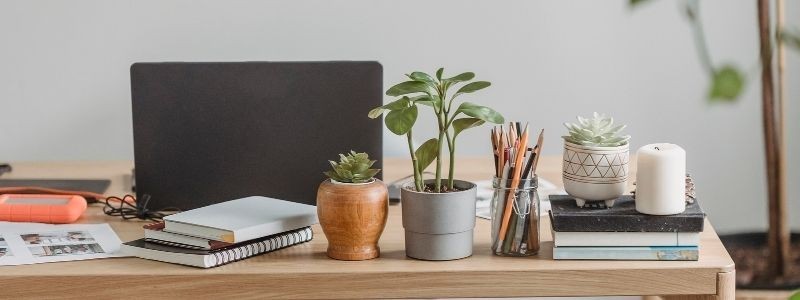Free home visits
with a local audiologist

Head of Online Medical Content

Audiology Expert at Hearing Aid UK

Digital fatigue and hearing loss | Causes | Symptoms | Statistics | How to avoid digital fatigue | Useful tips
Digital and listening fatigue, also known as "digital overload" or "information fatigue syndrome," refers to the physical and mental exhaustion that can result from extended use of digital devices or from constantly listening to and processing information. It can lead to symptoms such as eye strain, headache, difficulty concentrating, and decreased productivity.
After the COVID pandemic, businesses have continued to incorporate working remotely within their staff's working week to various degrees. Hybrid and remote working is now very much a part of our lives. Because of this, we now live in a world of an ever-growing digital nation that is now experiencing high levels of listening fatigue.
We have taken to digital tools, platforms and accessories to reach out and communicate with family, and friends - as well as constantly communicating with colleagues as we continue hybrid working or working remotely.
The clear distinction between work and home life, for many, doesn't exist. The balance has tipped and we are experiencing every moment of life on our screen in front of us. Doing everything digital is now the modern-day workforce.
Skype, Zoom, webinars and other digital platforms have become our lifelines to communication, our way of 'keeping in the loop' and our everyday necessities. However, with this comes the after-effects of blue light, distorted viewing and strained listening - and that's for people who have 'normal' hearing.
Imagine the effects of all this digital access on those with hearing loss. Digital fatigue (or digital fatigue syndrome) and listening fatigue are real, relentless and growing!
The digital fatigue definition or digital eye fatigue definition is mental exhaustion that is a result of watching, listening to and experiencing large levels of digital tools and apps. Physical discomfort is often experienced after long exposure to such devices. This is also known as digital eye strain and fatigue.
Digital listening fatigue is due to prolonged exposure to auditory stimuli. Listening fatigue symptoms include tiredness, pain, discomfort and loss of sensitivity in some cases. This can be referred to as digital audio fatigue or digital listening fatigue.
People with hearing loss are challenged all the time with hearing, so this type of fatigue, unfortunately, hits them harder and faster. Those with hearing loss are known to have fewer stimuli than those with normal hearing, so it increases the symptom and episodes of listening fatigue.
In short, hearing loss makes you tired. The reason is that our brain gives us the ability to hear and understand speech and sound. The hair cells in the inner ear turn these sounds into electrical signals through the auditory nerve and straight to the brain.
With hearing loss, the brain has to work much harder to make sense of and process all the gathered information it gets from the inner ear, which you can imagine - is both physically and mentally exhausting. Now add digital fatigue into the mix and the combination can be debilitating.
Digital fatigue and listening fatigue can take various forms. These can be twinges in the back of your neck, eye twitching, eye pain (digital eye strain), intense headaches, dehydrated and sagging skin and loss of sleep.
The increase in the 'blue light' experience can change our skin cells and ultimately how much Melatonin (sleep hormone) we produce. This decreases the quality and duration of our sleep, so we are left feeling exhausted, unmotivated and unable to focus.


Set an alarm for yourself to monitor your screen time, so you always make room for breaks - especially after long virtual meetings. If you don't wear glasses, you can purchase 'blue light' glasses that will filter out this and protect your eyes against potential future damage. These glasses are called digital anti-fatigue lenses or digital eye fatigue glasses.
When you do stop for a break, don't forget to step away from your screen and desk and move! This will increase your lymph flow, connect your muscles and improve your posture. Taking a short walk for some fresh air will also boost your mood and decrease stress.
We all know how important sleep is, but it is even more important to combat the unforgiving symptoms of digital fatigue. Keeping to a strict bedtime routine and ensuring that you don't use your screen an hour before you sleep will help you wind down and relax after the stresses of a full day of digital meetings.
Even though we may be working remotely from home, we still need to wear our hearing aids every day - it keeps the brain active and continues to process sounds. These devices are also very successful in reducing background noise, which you experience in digital conferences like Zoom.
You can also direct all your audio straight to your hearing aids and sync to Bluetooth assistive devices to make your digital working life much easier.

Here are a few tips on how to make your virtual communication easier with your colleagues and family.
Both digital fatigue and listening fatigue are common and not a nice thing to experience - especially if you work on computers a lot. The above tools are useful to help reduce the risk and change your digital habits with them, but you can also:
By taking these steps, you can help reduce the effects of digital and listening fatigue and improve your overall well-being.
Call us free on 0800 567 7621 to speak with one of our audiologists who can go through all the features on your hearing aids that will help improve digital access or to discuss device upgrade options.
 Straining to Hear Conversations – Do I Have Hearing Loss?
Straining to Hear Conversations – Do I Have Hearing Loss?  I have trouble hearing on the phone, do I have hearing loss?
I have trouble hearing on the phone, do I have hearing loss?  I Keep Turning Up the Volume on the TV – Do I Have Hearing Loss?
I Keep Turning Up the Volume on the TV – Do I Have Hearing Loss? Do not spend hundreds of pounds without getting a second opinion from us.
 Not only are the prices great, but the service is fantastic! Many thanks to your team.
Not only are the prices great, but the service is fantastic! Many thanks to your team.When we refer to a product as 'Latest Launch', we mean it is the latest to be released on the market.
When we refer to a product as 'New', we mean that the product is the newest hearing aid model on the market.
When we refer to a product as 'Superseded', we mean that there is a newer range available which replaces and improves on this product.
When we refer to a product as an 'Older Model', we mean that it is has been superseded by at least two more recent hearing aid ranges.